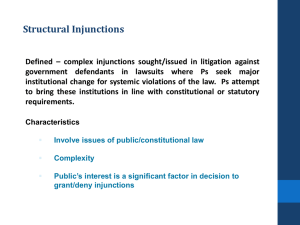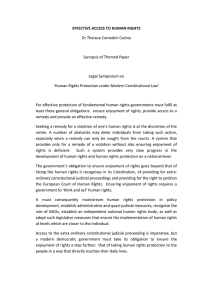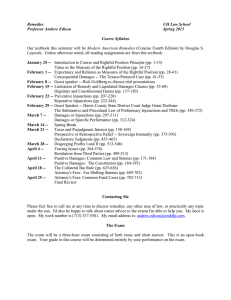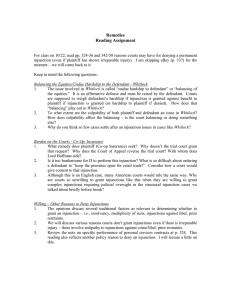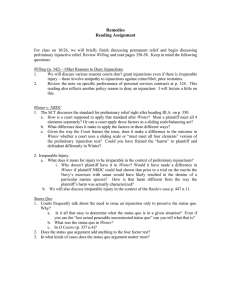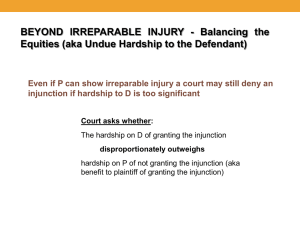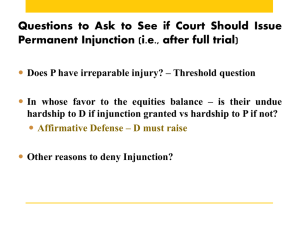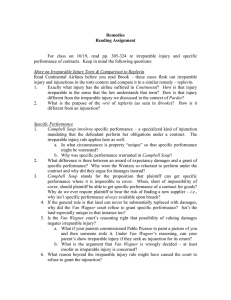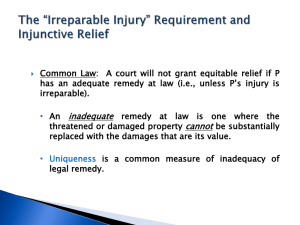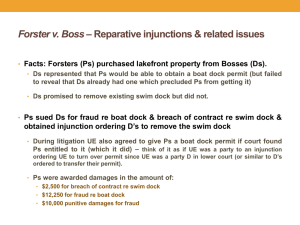Remedies Reading Assignment
advertisement
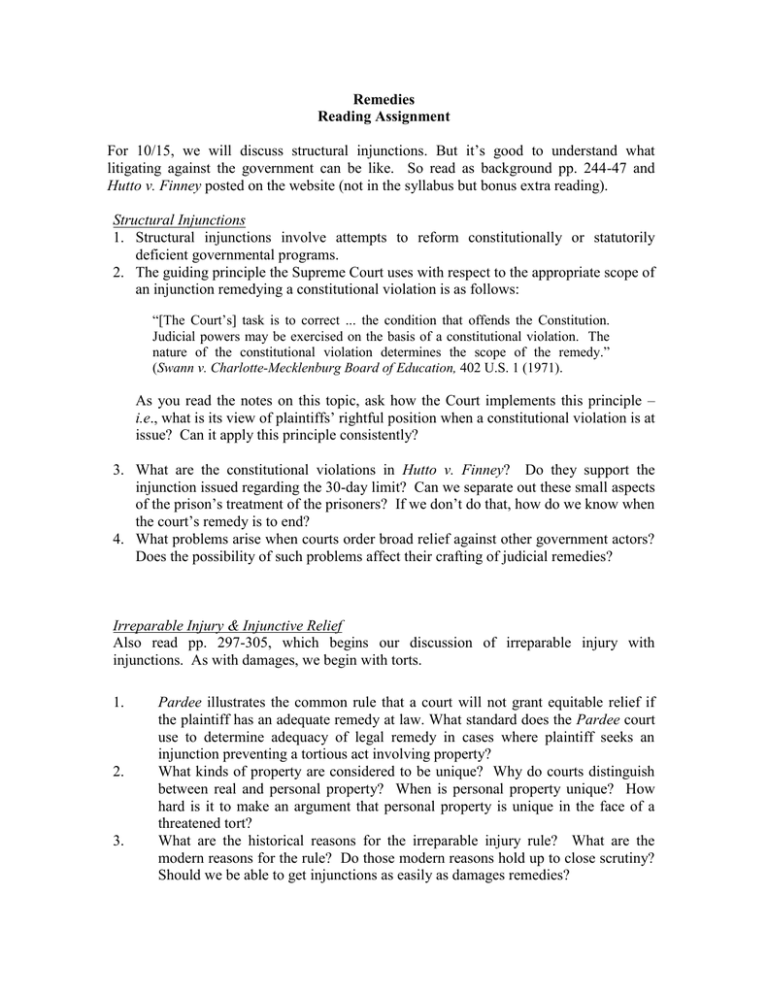
Remedies Reading Assignment For 10/15, we will discuss structural injunctions. But it’s good to understand what litigating against the government can be like. So read as background pp. 244-47 and Hutto v. Finney posted on the website (not in the syllabus but bonus extra reading). Structural Injunctions 1. Structural injunctions involve attempts to reform constitutionally or statutorily deficient governmental programs. 2. The guiding principle the Supreme Court uses with respect to the appropriate scope of an injunction remedying a constitutional violation is as follows: “[The Court’s] task is to correct ... the condition that offends the Constitution. Judicial powers may be exercised on the basis of a constitutional violation. The nature of the constitutional violation determines the scope of the remedy.” (Swann v. Charlotte-Mecklenburg Board of Education, 402 U.S. 1 (1971). As you read the notes on this topic, ask how the Court implements this principle – i.e., what is its view of plaintiffs’ rightful position when a constitutional violation is at issue? Can it apply this principle consistently? 3. What are the constitutional violations in Hutto v. Finney? Do they support the injunction issued regarding the 30-day limit? Can we separate out these small aspects of the prison’s treatment of the prisoners? If we don’t do that, how do we know when the court’s remedy is to end? 4. What problems arise when courts order broad relief against other government actors? Does the possibility of such problems affect their crafting of judicial remedies? Irreparable Injury & Injunctive Relief Also read pp. 297-305, which begins our discussion of irreparable injury with injunctions. As with damages, we begin with torts. 1. 2. 3. Pardee illustrates the common rule that a court will not grant equitable relief if the plaintiff has an adequate remedy at law. What standard does the Pardee court use to determine adequacy of legal remedy in cases where plaintiff seeks an injunction preventing a tortious act involving property? What kinds of property are considered to be unique? Why do courts distinguish between real and personal property? When is personal property unique? How hard is it to make an argument that personal property is unique in the face of a threatened tort? What are the historical reasons for the irreparable injury rule? What are the modern reasons for the rule? Do those modern reasons hold up to close scrutiny? Should we be able to get injunctions as easily as damages remedies?
